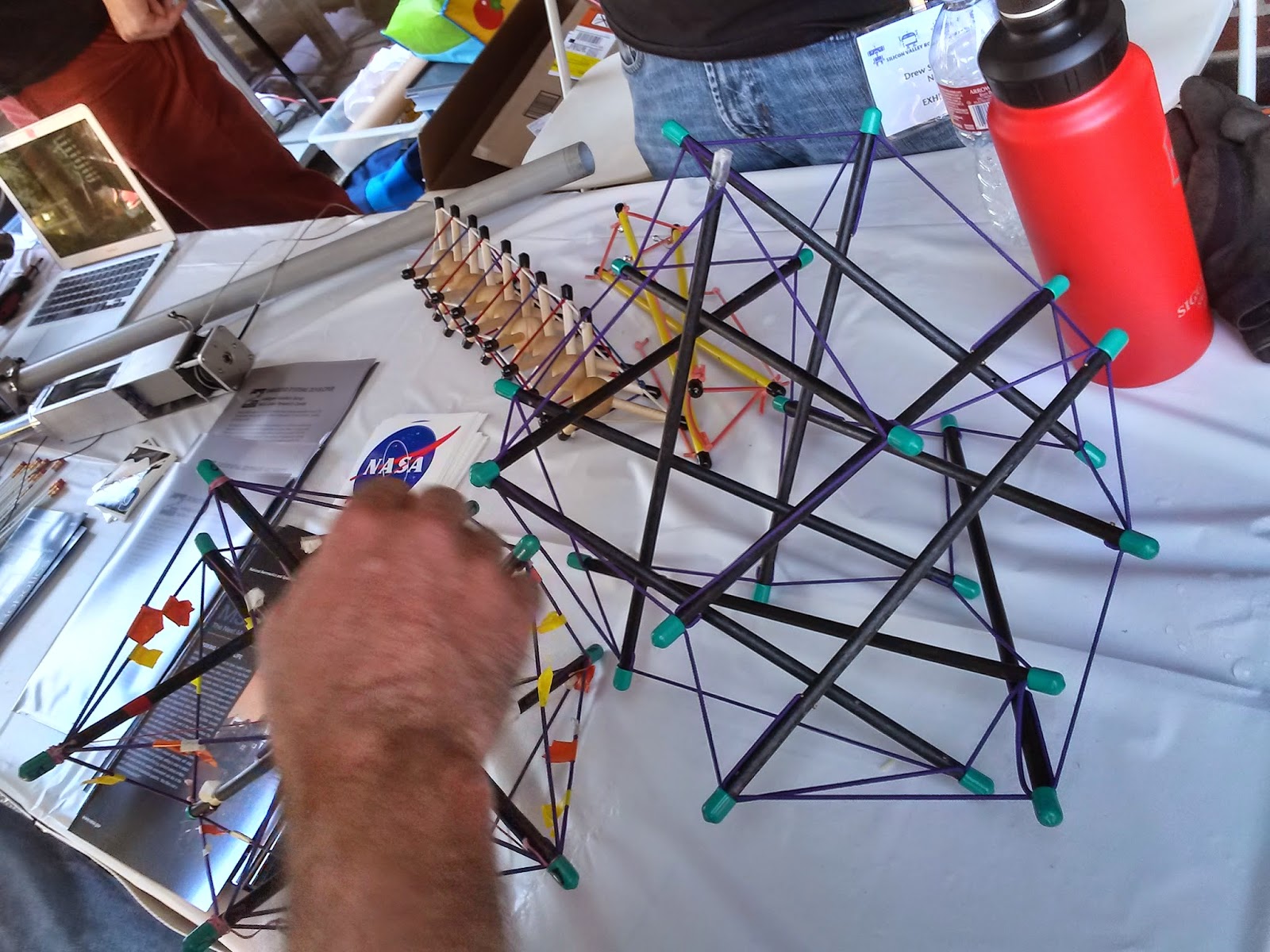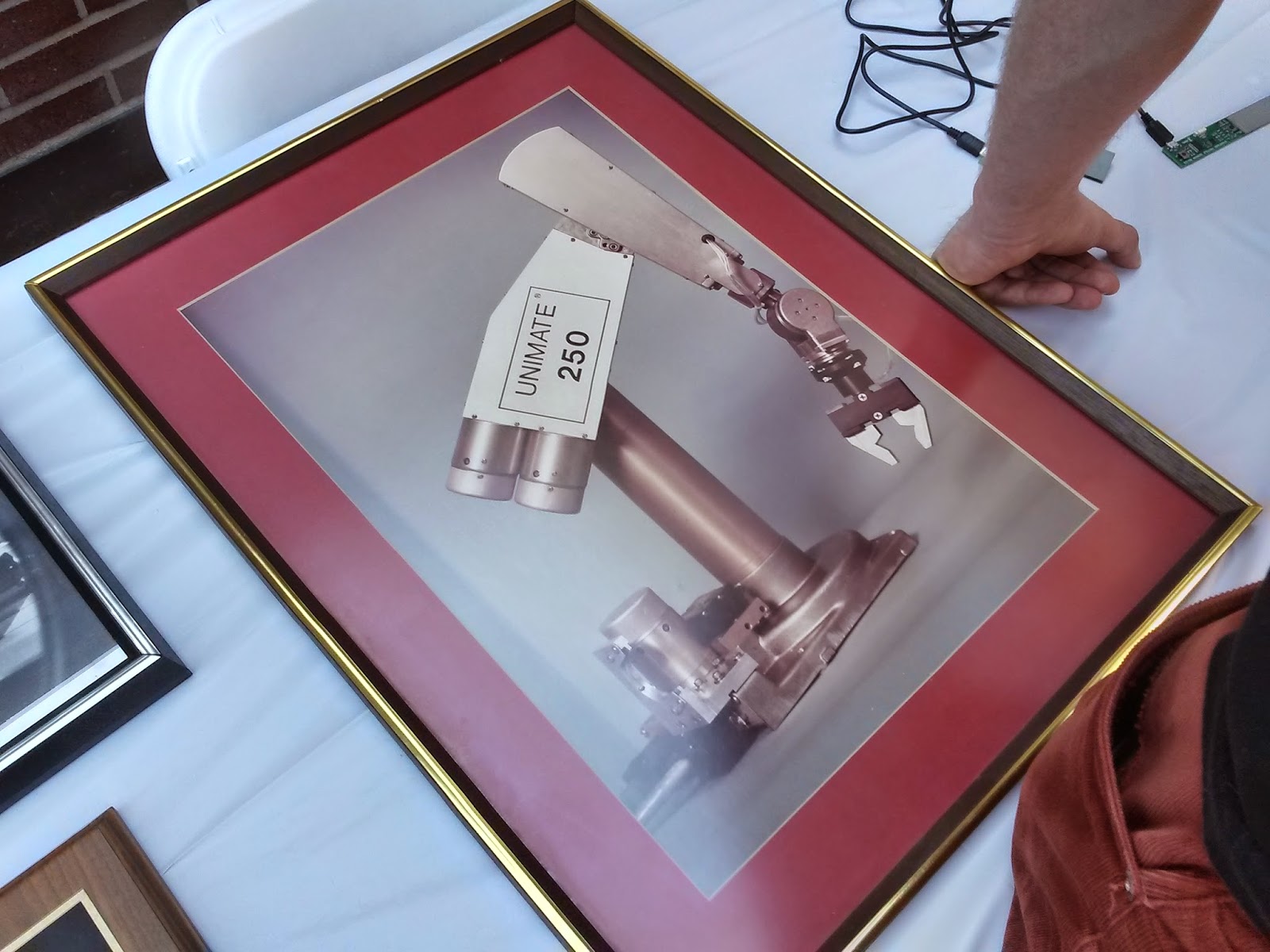It was packed with unemployed, flat broke programmers. As far as jobs, there was 1 engineering job at NASA which required many more years of college & had a line of guys wanting to get in. There is far more talent than demand. Stock & buyout prices don't reflect the real economy.
Earthquake simulator using air bags from a car suspension.
Pneumatic robot arms.
There were lots of these things.
The mighty Roomba add-on.
Where the XV-11 lidar sensor comes from. They were still using crusty NiMH batteries & relying more on brushing than sucking in their next revision. It's a shame the robotics can't be combined with 1 of the many high end portable vacuum cleaners.
Someone still trying to get that thing to work.
Version 1 of the sixense position sensor abounded in virtual reality & remote manipulator applications. Its range was only 3ft, beyond which it suddenly died. In range, it very accurately sensed position, considering it only had a magnetic field, but it had a lot of lag. There is great demand for position sensing. Without it, these remote manipulator applications have to rely on keyboard input.
This particular application was a turd. There was a real trick to calibrating it so the virtual arms appeared anywhere near your real arms. The lag made it very hard to manipulate any virtual objects. Got nauseous before succeeding.
A piece of the mighty Davinci surgery robot was there, but no complete robot.
The mechanisms were hanging out.
All those wires & pieces operating on the ragged edge of failure make for some exciting surgery.
There were some job openings, all for lawyers & accountants, but no engineers.
A remote manipulator being operated by a sixense position sensor. Very hard to use.
A bench microscope using a DSLR.
Bosch has an industrial robotics division, just like Denso.
Occulus Riftbook wasn't there, but there were a few version 1 headsets with long lines of men waiting to try them on. Found it as nauseating as every other POV game. There was a lot of lag.
A wall climbing robot that uses 5000V to generate static cling.
A form of locomotion based on the cytoskeleton. It looked like a cheap way for hobbyists to get locomotion.
The actuators were either winches or
Very expensive linear motors.
Despite 50 years of budget cuts, NASA still had 1 extremely over engineered piece of aluminum that put the after-tax hobbyist projects to shame.
There was a picture of the robot used in Innerspace to handle the microchip. The guy who invented the Unimate was also there. Didn't really believe it was the exact robot & the guy never heard of Innerspace, so didn't photograph everything. A quick review of the DVD collection revealed
it was indeed the same robot, if not the same model number from the movie. It was the 1st robot arm which used direct drive stepper motors & it was patented. 1 of the students of the guy who invented it founded a startup that was sold to Google.
Pressure sensor with position.
Cheap 2 axis milling machine.
Boring.
Biomorphic walking robots made by folding paper & throwing in a bunch of servos. They scurried pretty fast, on their paper legs. That took a lot of mechanical engineering. Only useful in Calif*, where it no longer rains.
3 generations of FOG gyros, including a russian gyro. The newest & smallest one is $1000.
There are a lot more people making robots at home than before.
There were definitely signs of very limited after-tax income, not having the means to use the ideal components, projects being started & stopped over many years, a major achievement in just getting something to move on its own.
Telepresence robots abounded.
Something to do with beards & hair.
Automotive lidar.
It could be an artform. It updated at some 5Hz.
It had to spin very fast to get 5Hz.
Very simple $180 submarine robot. No doubt, the waterproof motors are a big expense. The guy couldn't get it balanced & the water wasn't deep enough, so it just floated on the surface.
There was a 3D Robotics Iris, but no need to photograph it.
Running back home.











































































Comments
Thank You Jack,
Love your perspective as always.
We need to Kickstart the $300.00 3 axis FOG.
Then we can sell it to Google for umpteen billion.